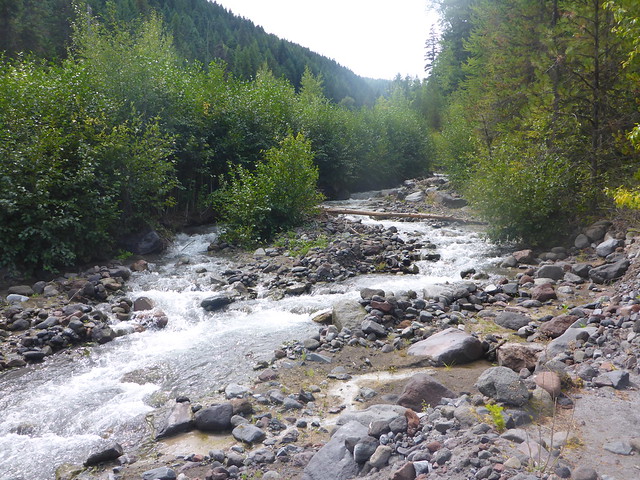Polallie Cooper Timber Sale (2015)

Project Status Update
Ten miles south of the community of Parkdale, the Polallie Cooper Timber Sale area initially included sections of the Wild and Scenic East Fork Hood River corridor, portions of the potential Tamanawas Falls Wilderness area addition, Critical Habitat for northern spotted owls, and a sensitive municipal water aquifer. It is adjacent to several private land holdings and surrounds a historic building beloved by cross country skiers, the Cooper Spur Warming Hut. Thus the U.S. Forest Service considers it an “urban interface.” Of the 3,000 acres initially proposed for commercial logging in 2015, approximately 1,900 of these acres included mature, old growth or never-logged forest. Popular trails affected by this proposal include Tilly Jane trail, Zigzag, Dog River, Wagon Road, Tilly Jane ski trail, Elk Meadows and East Fork.
On August 31, 2017, and after constant pressure from Bark, other community organizations, and Oregon legislators, the Forest Service released a final Environmental Assessment and draft Decision that split the the Polallie Cooper Timber Sale into two phases: Phase 1 (1,188 acres) does not include the highly controversial logging & road building in the Cystal Springs drinking water Zone of Contribution and the Wild & Scenic River. However, it still includes logging and building roads into a potential Tamanawas Falls Wilderness addition and many other unroaded mature forests.
In October 2017, Bark, Oregon Wild, the American Forest Resources Council, and the Forest Service met at a formal Objection Resolution meeting, where we discussed our objection and later reached a resolution. This included dropping approximately two miles of roads and an additional 23 acres of surrounding forest. This was after already dropping 587 acres since Scoping occurred in 2015. The Forest Service further agreed to confirm additional unmapped riparian areas identified by Bark staff, and apply appropriate no-cut buffers to protect these areas. Now that we have reached resolution on “Phase 1,” Bark is still awaiting “Phase 2” of the project.
Looking back to 2005, Bark and a coalition of conservation, recreation and citizen groups celebrated the cancellation of the first Polallie Cooper Timber Sale, which was one of a series of projects that would have gravely impacted the north side of Mt. Hood. Also proposed for the area were an expansion of the Cooper Spur Ski area and the construction of a destination resort by Mt. Hood Meadows. After years of pressure the original timber sale was dropped and the resort plans were defeated. That’s why we were shocked to see the Forest Service decided to revive the 3,000 acre Polallie Cooper Timber Sale in 2015.
Things have changed since the original Polallie Cooper Timber Sale was dropped in 2005. The Mt. Hood Wilderness Bill has expanded wilderness and established protections for the Crystal Springs Zone of Contribution, the watershed that serves much of Hood River County. Polallie Cooper is one of three newly proposed sales that are situated adjacent to one another, covering a massive stretch across the north of Mt. Hood National Forest. The two other sales are Red Hill and Lava. Thus it is important to for us to tell the Forest Service to investigate the cumulative impacts of logging that could total upwards of 7,000 acres.
in 2016, Bark’s network of volunteers raised awareness about the Polallie Cooper area through our Community Mapping Project. With this project, we demonstrated our values, understandings and interactions with the place, our “long but invisible history” of relating to the forest, the desire for change, and create an educational tool for all people who love Mt. Hood.
Bark’s Concerns
This project initially included 1,900 acres of “Recently Unmanaged Stand Thinning” (mostly never-logged forest), 440 acres of “Plantation Thinning”, and 620 acres of “Sapling Thinning”. After the release of the Environmental Assessment for Phase 1, and the Objection Resolution with Bark, this size has been reduced to 1,188 acres (Phase 2 is expected to include an additional 1,185 acres).
Within five years after logging, the Forest Service intends to use a variety of fuel treatments on these acres including pile burning, jackpot burning, mastication, underburning & swamper burning.

Resources for Comment-Writing
Roads
To facilitate logging in this wild and scenic part of Mt. Hood National Forest, the Forest Service originally proposed to build 8 miles of NEW roads, and 4 miles of rebuilt roads. Through Phase 1 and Bark’s Objection Resolution, the number has been reduced to 4.3
Habitats & Species
Northern spotted owl, Harlequin duck, Cope’s Giant salamander, Columbia River Bull Trout, Northern Goshawk, Peregrine Falcon & Pine Marten. Suitable habitat exists for Red Tree Voles and Wolverines.
Restrictions
Popular trails affected by this proposal include Tilly Jane trail, Zigzag, Dog River, Wagon Road, Tilly Jane ski trail, Elk Meadows and East Fork.
Polallie Cooper would also impact a volunteer-maintained nordic trail to the historic Cooper Spur Warming Shelter.
Associated Files